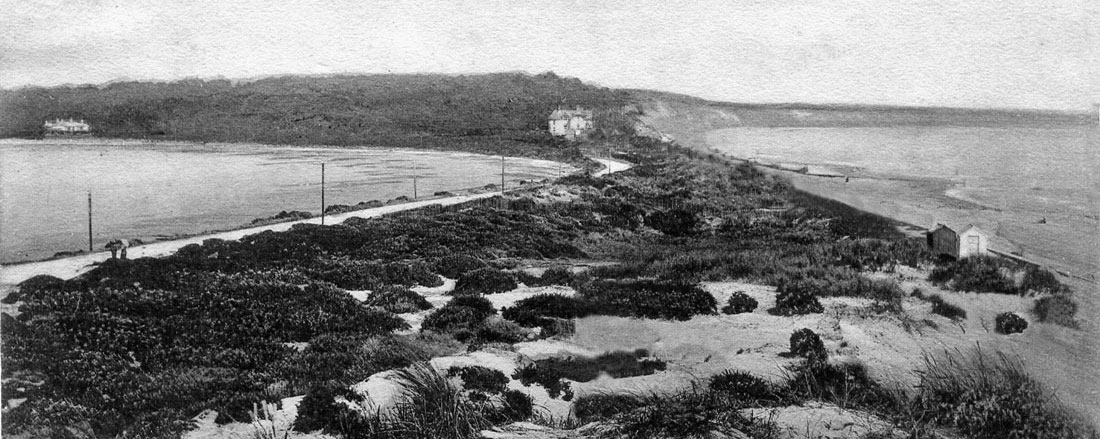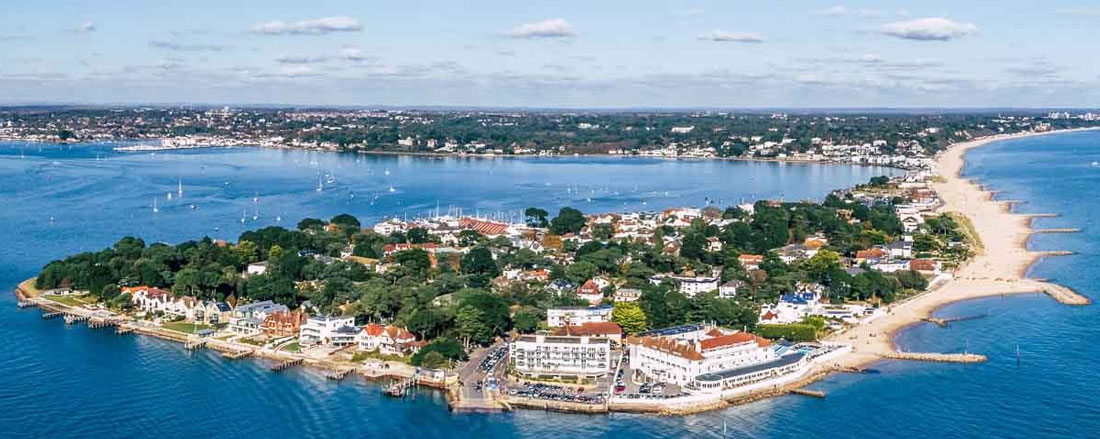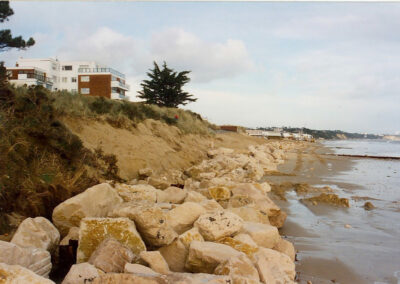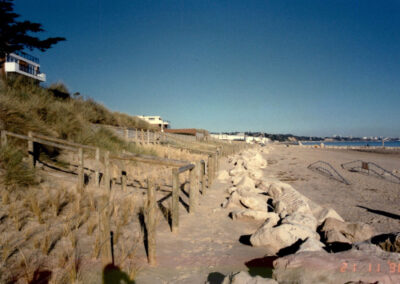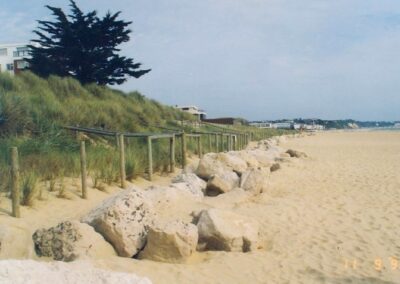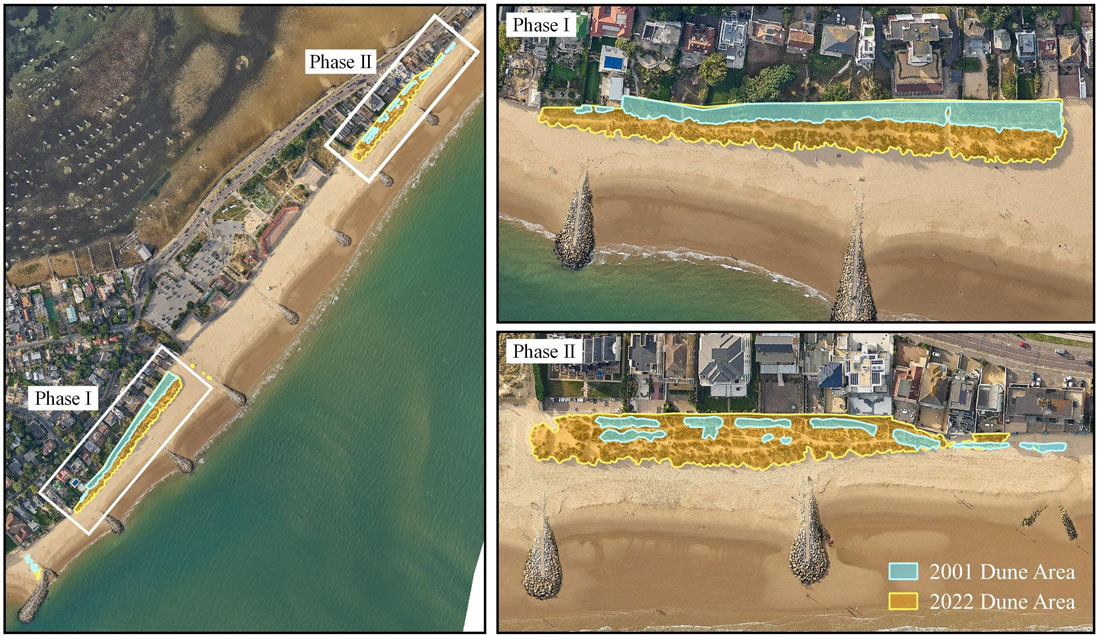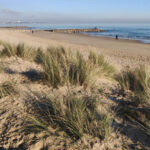Current Project
Sandbanks Dune Management Study 2024
Developing an improved approach to managing the sand dunes at Sandbanks.
Lead Authority
Project start date
January 2024
Last Updated
9 August 2024
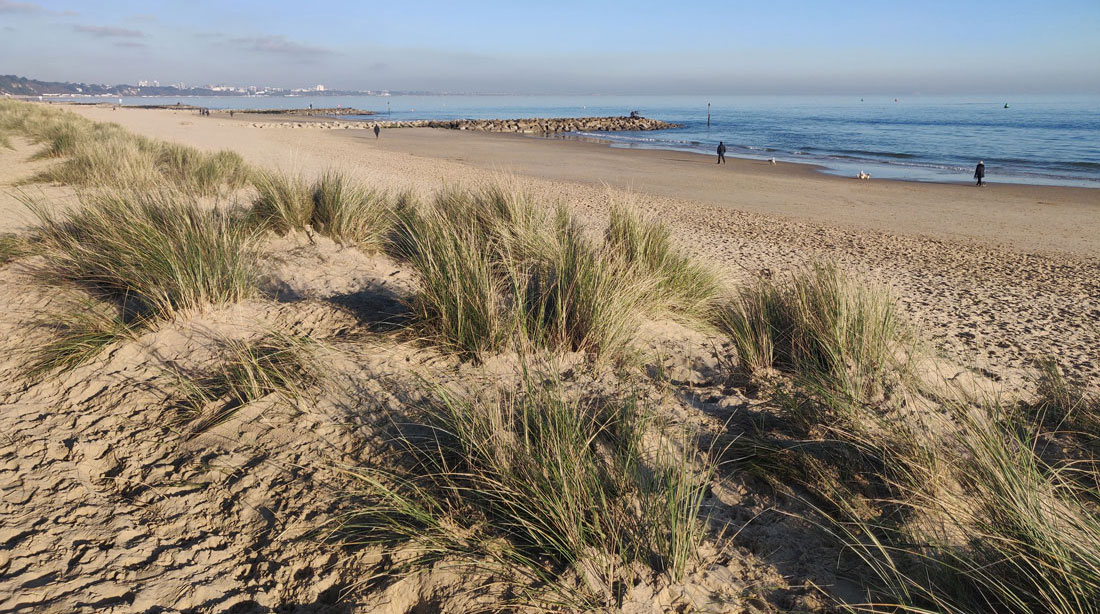
Sandbanks is host to a system of sand dunes which provide a natural form of protection against coastal erosion, create habitats for rare and protected species, and play an important role in increasing amenity value. However, the spread of dunes has had impacts in some areas such as beach accessibility, sand encroachment onto property and trampling of sand dune habitat.
The aim of this study is to develop an improved approach to managing the sand dunes to consider these impacts whilst ensuring they continue to provide coastal protection and habitat for species.
Project background
Prior to development in the 20th century, the Sandbanks Peninsula was sparsely populated and consisted of sand dune habitat. Twentieth century development saw loss of this habitat and the coastline experienced problems of coastal erosion.
Changes to Sandbanks from a sand dune rich peninsula in 1907 (left) to a more developed coastline as seen today
In 1991, a series of south easterly storms reduced beach levels considerably, resulting in emergency works including the construction of a rock revetment at the back of the beach in 1995.
Following these works, the Sandbanks Coast Protection Scheme was produced to deal with the rapidly worsening situation. This included sand dune regeneration in 1996 (Phase I) and 2001 (Phase II), whereby Marram and Sea Lyme grass were planted and fenced off.
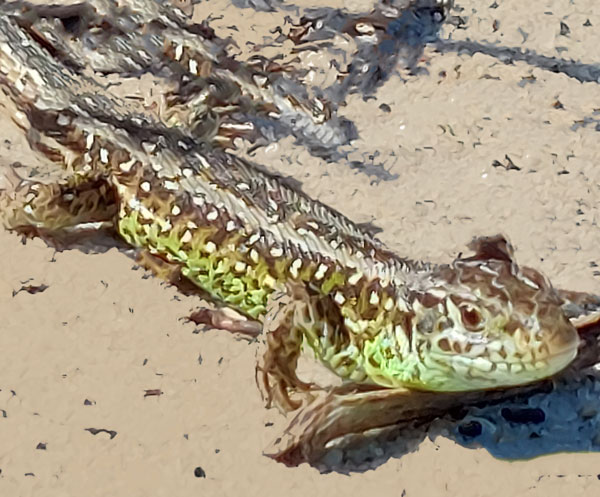
In 2020, a study was undertaken to determine the success of the scheme, highlighting the extent of dune growth since its implementation:
It is clear that following the scheme, the sand dunes have become well established, have shown signs of spreading along the coastline and have become populated by the rare and legally protected sand lizard.
Growth in sand dune area since the Sandbanks Coast Protection Scheme
The need for a new management approach
The success of dune development at Sandbanks raises several challenges which require consideration, including:
- Sand Lizards / Protected Species – The presence of these limits what, when, where and how any works can occur.
- Storms – Periodically cause dune face erosion/cliffing, reducing the coast protection and habitat functions of the dunes.
- Visitor Trampling – Excessive/repetitive trampling of sand dune habitat can reduce/destroy vegetation height and cover.
- Beach Accessibility – Some access paths have become buried by sand, inhibiting easy access for all users.
- Sand Encroachment – Stormy winters can cause accumulation of wind-blown sand on the promenade, beach huts, buildings and property walls which are not designed to take the weight of sand loading.
- Reduction of Sea Views and Privacy – The height and spread of dunes may block views and / or reduce privacy from land and properties behind the dunes.
Next Steps - Have your say
Our Sandbanks Sand Dunes Management survey is now live until Monday 30 September 2024 to gather the views and opinions of local residents, beach users and others with an interest in the area to inform management approaches going forward.
- Details, documents & survey at haveyoursay.bcpcouncil.gov.uk/sand-dunes
Coasts for Kids video
‘Our coasts like moving’
You’ll find more about how dunes form in Episode 2 of the 5-part ‘Coasts for Kids’ series here; it explains how sand dunes form and the role they perform protecting coastal communities from tidal flooding.
The full series can be found eslewhere on this website at twobays.net/coasts-for-kids

